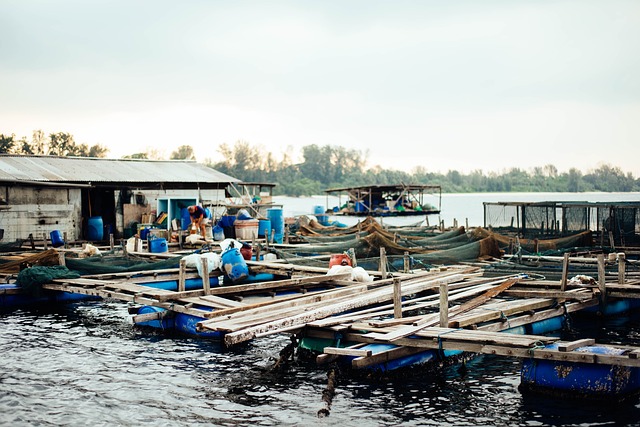Introduction:
As a B2B buyer in the aquaculture industry, understanding how temperature and salinity are managed in fish cage systems is critical for making informed decisions. These two factors play a significant role in maintaining the health and well-being of fish and ensuring optimal growth conditions. This article will delve into the importance of temperature and salinity management, the methods employed to control these parameters, and the benefits of proper management for both fish farmers and B2B buyers.
Importance of Temperature and Salinity Management:
Temperature and salinity are essential factors in maintaining the health of fish in cage systems. The optimal range of temperature and salinity varies depending on the species being farmed. Maintaining these parameters within the ideal range ensures the fish experience minimal stress, optimal growth rates, and reduced disease susceptibility.
Fish are ectothermic animals, meaning their body temperature is influenced by the surrounding water temperature. The metabolic rate, digestion, and growth of fish are directly affected by temperature. Deviations from the optimal temperature range can result in slowed growth, increased susceptibility to diseases, and higher mortality rates.
Salinity, on the other hand, influences the osmoregulatory processes in fish. Fluctuations in salinity levels can cause osmotic stress, affecting the fish’s ability to regulate their internal water and ion balance. This can lead to reduced growth, weakened immune systems, and even death in extreme cases.
Methods of Managing Temperature and Salinity:
- Site Selection: Choosing the right location for fish cages plays a significant role in managing temperature and salinity. Selecting sites with stable temperature and salinity levels, proper water circulation, and minimal exposure to external factors, such as pollution or runoff, can help maintain ideal conditions for fish growth.
- Cage Design: The design of fish cages can influence temperature and salinity regulation. The use of submersible cages can allow farmers to adjust the depth at which the fish are kept, providing the ability to move fish to areas with more suitable temperature and salinity conditions.
- Aeration and Water Circulation: Aeration systems and water circulation techniques can help regulate temperature and salinity within the fish cages. These systems increase oxygen availability, promote waste removal, and help maintain stable temperature and salinity levels within the cages.
- Monitoring and Control Systems: Implementing advanced monitoring and control systems, such as automated sensors and remote data collection, enables fish farmers to continuously track temperature and salinity levels in their fish cages. These systems allow for timely interventions and adjustments to maintain optimal conditions.
- Species Selection: Choosing fish species that are better adapted to the specific temperature and salinity conditions of the farm location can also help manage these parameters. Some species can tolerate a wider range of temperature and salinity levels, making them more suitable for farming in certain environments.
Benefits of Proper Temperature and Salinity Management:
Proper temperature and salinity management in fish cage systems can result in several benefits for both fish farmers and B2B buyers, including:
- Improved Fish Health and Growth: Ensuring optimal temperature and salinity conditions promotes healthier fish with faster growth rates, leading to a higher yield of marketable fish.
- Reduced Mortality Rates: Minimizing stress caused by fluctuations in temperature and salinity can lower mortality rates, decreasing financial losses and improving overall farm productivity.
- Enhanced Product Quality: Healthy fish that experience less stress produce better-quality meat, which can command a higher price in the market and improve the reputation of the supplier.
- Lower Disease Occurrence: Proper temperature and salinity management can reduce the incidence of diseases, decreasing the need for costly treatments and minimizing the risk of disease outbreaks.
- Sustainability: Maintaining optimal conditions in fish cage systems helps ensure a more sustainable approach to aquaculture, as healthier fish require fewer resources, such as feed and medication, and generate less waste.
Conclusion:
Effective temperature and salinity management in fish cage systems is a crucial aspect of modern aquaculture practices. By employing various techniques, such as site selection, cage design, aeration, monitoring systems, and species selection, fish farmers can maintain optimal conditions for the growth and well-being of their fish stocks.
As a B2B buyer, understanding the importance of proper temperature and salinity management in fish cages can help you make more informed decisions when selecting suppliers and products. By partnering with suppliers who prioritize these aspects of fish care, you can ensure that you are offering your customers high-quality, sustainably-produced fish.
In summary, temperature and salinity management in fish cage systems is not only essential for the health and productivity of the fish, but also for the long-term success of the aquaculture industry. By investing in the proper techniques and technologies, fish farmers and B2B buyers alike can reap the benefits of increased fish health, improved product quality, and a more sustainable approach to aquaculture.

